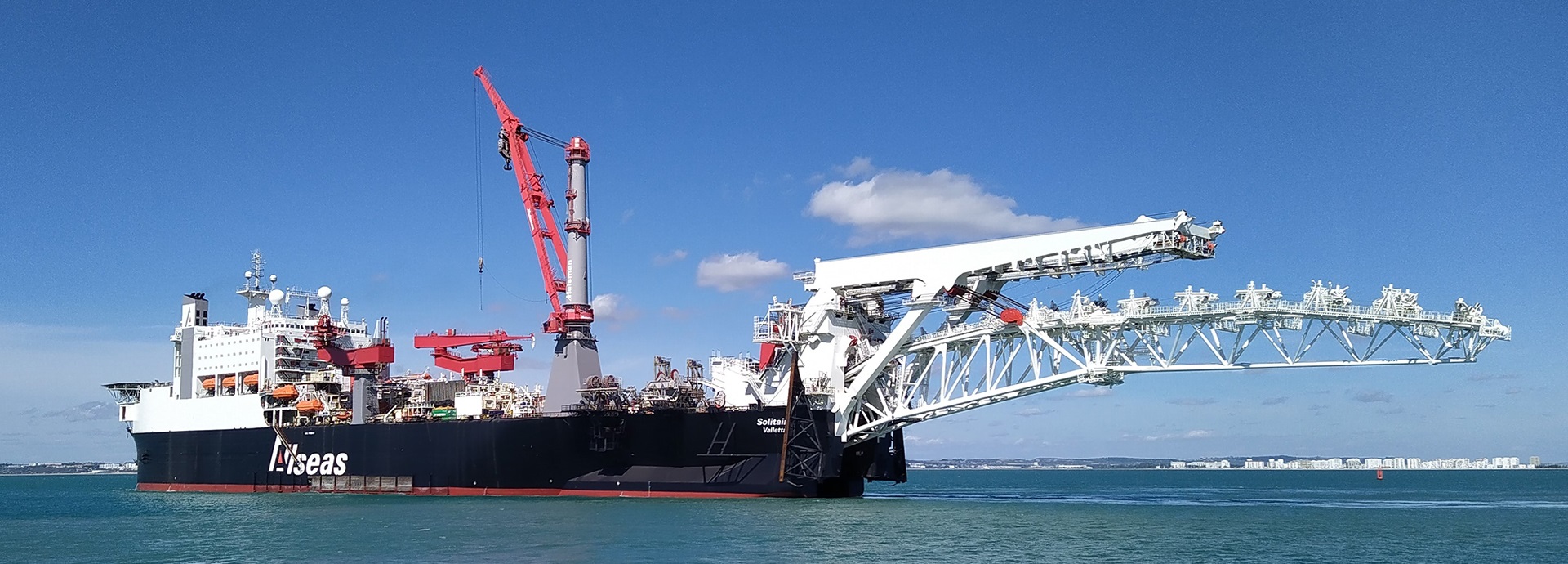

Laying underwater pipes in rough weather or congested shipping areas is not a job for the faint-hearted; it’s one where precise manoeuvrability and control are non-negotiable. When the ten thrusters onboard the Allseas vessel Solitaire – which in 2007 set the world record for ultra-deepwater pipeline installation at 2,775 m – needed an overhaul, the company approached Wärtsilä to help ensure reliable and precise control for years to come.
Allseas is a global leader in offshore pipeline installation, heavy lift and subsea construction. Operational in its current capacity since 1998 and with a length of 397 metres, a pipe-storage capacity of 22,000 tonnes and accommodation for a crew of 420, Allseas’ Solitaire is one of the largest pipelaying vessels in the world.
The show must go on
Because the Solitaire operates in exceptionally deep waters and has a holding force of 1,050 tonnes of pipe, it is critical that the vessel is able to maintain its position in all kinds of weather. Any unplanned stoppage would mean a great deal of extra
time and expense.
“If operations need to be suspended, the pipeline needs to be abandoned and recovered later. So for operational reasons and to maintain safety at all times, it is essential that the vessel’s thrusters can be relied upon 100%.
- Mathieu van der Krabben, Project Manager, Project Services, Wärtsilä Netherlands
Overhauling 500 tonnes of vital thrusters
Onboard the Solitaire are ten Wärtsilä 5,500 kW underwater mountable azimuth thrusters, each weighing in at 50 tonnes. After working with another company on a previous overhaul, Allseas approached Wärtsilä to inspect and overhaul all
ten thrusters. “We removed and inspected every thruster, then decided exactly what needed to be done to each one in close cooperation with the customer,” explains Van der Krabben. “This meant not only changing the parts that were
obviously worn, but also taking advantage of the downtime to advise on what might need attention in the near future to ensure maximum uptime and reliable operation.”
In addition to overhauling the thrusters themselves, the project
also involved refurbishment of their receptacles. This process required specialist in-situ machining and welding while the vessel was in drydock in Cadiz, Spain.
The flexibility to overcome challenges
An additional consideration for this project was the ongoing COVID-19 safety precautions that had to be followed during the overhaul. “It’s a whole new situation and way of thinking about safety, with face masks and social distancing. A COVID case during a project like this would have stopped the overhaul dead in its tracks, so we worked closely with the shipyard so that everything could proceed as planned,” explains Anton Spit, Superintendent, Propulsion System Services, Wärtsilä.
There were also many challenges related to the drydock which required flexibility about when and how the work was carried out. For example, ongoing steel blasting being carried out by another team had to be taken into account. The availability of cranes to lift the thrusters was also limited. In the end, Wärtsilä extended the timeframe for the overhaul to allow for these challenges while still ensuring access to the needed experts at all stages of the project – and completing the whole operation within budget.



